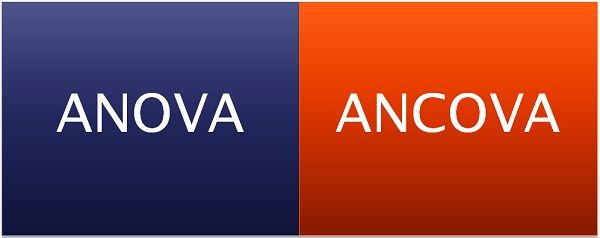 ANOVA is an effective technique for carrying out researches in various disciplines like business, economics, psychology, biology and education when there are one or more samples involved. It is often misconstrued with ANCOVA, as both are used to check the variance in the mean values of the dependent variable associated as a result of controlled independent variables, after considering the consequences of the uncontrolled independent variable.
ANOVA is an effective technique for carrying out researches in various disciplines like business, economics, psychology, biology and education when there are one or more samples involved. It is often misconstrued with ANCOVA, as both are used to check the variance in the mean values of the dependent variable associated as a result of controlled independent variables, after considering the consequences of the uncontrolled independent variable.
ANOVA is used to compare and contrast the means of two or more populations. ANCOVA is used to compare one variable in two or more populations while considering other variables. Have a glance at the article to know the differences between ANOVA and ANCOVA.
Content: ANOVA Vs ANCOVA
Comparison Chart
| Basis for Comparison | ANOVA | ANCOVA |
|---|---|---|
| Meaning | ANOVA is a process of examining the difference among the means of multiple groups of data for homogeneity. | ANCOVA is a technique that remove the impact of one or more metric-scaled undesirable variable from dependent variable before undertaking research. |
| Uses | Both linear and non-linear model are used. | Only linear model is used. |
| Includes | Categorical variable. | Categorical and interval variable. |
| Covariate | Ignored | Considered |
| BG variation | Attributes Between Group (BG) variation, to treatment. | Divides Between Group (BG) variation, into treatment and covariate. |
| WG variation | Attributes Within Group (WG) variation, to individual differences. | Divides Within Group (WG) variation, into individual differences and covariate. |
Definition of ANOVA
ANOVA expands to the analysis of variance, is described as a statistical technique used to determine the difference in the means of two or more populations, by examining the amount of variation within the samples corresponding to the amount of variation between the samples. It bifurcates the total amount of variation in the dataset into two parts, i.e. the amount ascribed to chance and the amount ascribed to specific causes.
It is a method of analysing the factors which are hypothesised or affect the dependent variable. It can also be used to study the variations amongst different categories, within the factors, that consist of numerous possible values. It is of two types:
- One way ANOVA: When one factor is used to investigate the difference amongst different categories, having many possible values.
- Two way ANOVA: When two factors are investigated simultaneously to measure the interaction of the two factors influencing the values of a variable.
Definition of ANCOVA
ANCOVA stands for Analysis of Covariance, is an extended form of ANOVA, that eliminates the effect of one or more interval-scaled extraneous variable, from the dependent variable before carrying out research. It is the midpoint between ANOVA and regression analysis, wherein one variable in two or more population can be compared while considering the variability of other variables.
When in a set of independent variable consist of both factor (categorical independent variable) and covariate (metric independent variable), the technique used is known as ANCOVA. The difference in dependent variables because of the covariate is taken off by an adjustment of the dependent variable’s mean value within each treatment condition.
This technique is appropriate when the metric independent variable is linearly associated with the dependent variable and not to the other factors. It is based on certain assumptions which are:
- There is some relationship between dependent and uncontrolled variable.
- The relationship is linear and is identical from one group to another.
- Various treatment groups are picked up at random from the population.
- Groups are homogeneous in variability.
Key Differences Between ANOVA and ANCOVA
The points given below are substantial so far as the difference between AOVA and ANCOVA is concerned:
- The technique of identifying the variance among the means of multiple groups for homogeneity is known as Analysis of Variance or ANOVA. A statistical process which is used to take off the impact of one or more metric-scaled undesirable variable from dependent variable before undertaking research is known as ANCOVA.
- While ANOVA uses both linear and non-linear model. On the contrary, ANCOVA uses only linear model.
- ANOVA entails only categorical independent variable, i.e. factor. As against this, ANCOVA encompasses a categorical and a metric independent variable.
- A covariate is not taken into account, in ANOVA, but considered in ANCOVA.
- ANOVA characterises between group variations, exclusively to treatment. In contrast, ANCOVA divides between group variations to treatment and covariate.
- ANOVA exhibits within group variations, particularly to individual differences. Unlike ANCOVA, that bifurcates within group variance in individual differences and covariate.
Conclusion
Therefore, with the above discussion you might be clear on the differences between the two statistical techniques. ANOVA is used to test the means of two groups. On the other hand, ANCOVA is an advanced form of analysis of variance; that combines both ANOVA and regression analysis.






Okellp Daniel Opio says
Your explanations are extremely simple and clear. Imagery voice keep following as you read Thanks.